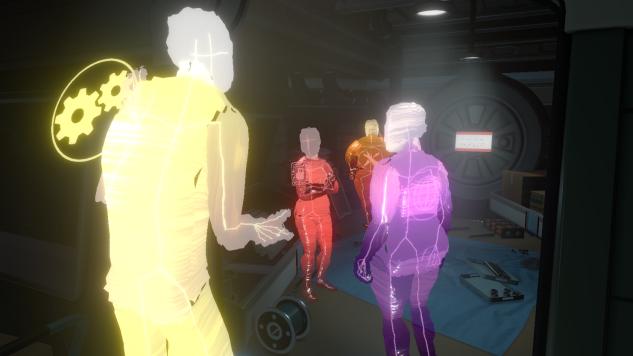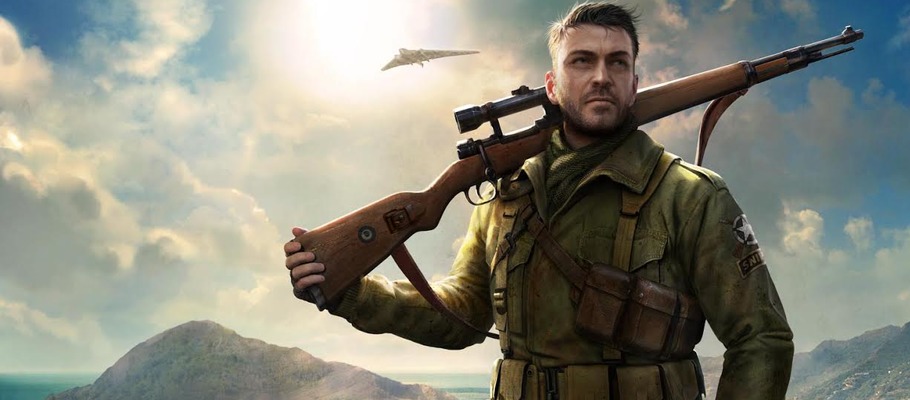In two weeks, it will be the four year anniversary of the release of Gone Home, the first game from The Fullbright Company. Set in an empty house in the Pacific Northwest, it centers on a young woman as she snoops through the secrets stashed away in her family’s home, ultimately uncovering the reason behind her sister’s sudden disappearance, the impulsive joy of young lesbian love.
I never really liked the game. While I’m pansexual and also really enjoy the “exploring an abandoned house” genre of games, for me, it just didn’t gel. I feel almost guilty admitting that, given how well received Gone Home was by my fellow critics. (I mean, it was Paste’s game of the year in 2013.) By the point I played it, I was already burnt out on reading notes left behind in an abandoned house. I was spending a lot of time in the mod community, where folks were making their own content with the engines used for Amnesia, FEAR or Half Life, often relying on this format (Gone Home itself was initially prototyped on the HPL Engine 2, the Amnesia engine). And this specific method of storytelling is also used heavily in other series I play, like The Elder Scrolls and Fallout. Whatever sense of wonder I might have gotten out of Gone Home was probably ruined by a greater sense of routine.
So when Fullbright’s follow-up Tacoma was announced I withheld judgment, but also interest, unsure if I should anticipate the game or not. As time has gone on, game designers’ reliance on audio logs and notes has only increased, with few new ways to present supplementary information or backstories outside of this well worn technique. What could Tacoma possibly do that hasn’t already been done? I put it on the back burner, resolving to pay attention once the game was closer to its release date, and shifting my expectations into neutral.
Now, having played the game, I am pleasantly surprised.
Tacoma is clearly the work of a team very concerned with finding new ways to deliver narrative. In Tacoma, the player is an AI specialist sent to extract an AI system from an experimental orbital vacation unit that is now devoid of passengers. The events leading up to their disappearance have been partially stored in the ship’s memory, and by “replaying” these segments, a story begins to take form. Each scene can be fast forwarded, paused or rewound as the player follows the ship’s former inhabitants, picking up new pieces of the puzzle as they listen to different conversations. At certain points the player must root through the characters’ communications and personal files to help piece together what happened.
The fascinating end result is that the player is scripted into sequences that would otherwise play out in a cut scene, making them a key part of the events even as a third party observer. It’s a strong enough technique that I was heavily drawn into the drama playing out in the game even though, as the player, I was responsible for its momentum. It’s hard to form a cohesive narrative using this particular style of storytelling, because the player’s pathing and discovery of notes and audio logs can be unpredictable. But here, it’s been crafted so well that I was able to easily get a linear grasp of the story, despite the variety in written materials.
I’ve never been much for stories set in space, outside of the occasional outlier like SOMA or Futurama, and yet, here we are. I got so caught up in the story, I found myself gasping out loud and putting my hands over my face. That’s how much I liked it. I risked jawline acne for this game.
I had to take a lot of breaks between sections with heavy information, as if overwhelmed. I wonder if having the narrative broken up by puzzle solving and combat in so many other games has reinforced a limited attention span. Or maybe the events of the game are just that compelling. The last game that held my attention this way was probably SOMA, a game that in setting and themes shares a lot with Tacoma, particularly when it comes to heartbreak.
Without revealing too much, Fullbright retreads old territory with the story’s conclusion, the events of the story evoking a well-earned sense of dread but resolving on an optimistic note. While I probably could have guessed, based on their track record, that the game’s ending would be a surprise, I didn’t find it disappointing. Going into a game with no knowledge of what you’re about to play is freeing in its lack of expectation. It’s hard to be disappointed when a game fails to meet up to your demands if those demands don’t exist. I’m glad I had a chance to play Tacomawith fresh eyes, because it had a chance to win me over on its own.
My sole criticism is its length. Given how tied up I was in the suspense, Tacoma’s short play time seemed almost merciful, but I would have liked to have spent more time with each of the characters (even the AI, Odin), or get a more thorough exploration of the game’s intriguing conclusion. That being said, Tacoma is remarkable and I look forward to the impact it will have on narrative devices in videogames.
Tacoma was developed and published by Fullbright. Our review is based on the PC version. It is also available for Xbox One.
Holly Green is the assistant editor of Paste Games and a reporter and semiprofessional photographer living in Seattle, WA. She is also the author of Fry Scores: An Unofficial Guide To Video Game Grub. You can find her work at Gamasutra, Polygon, Unwinnable, and other videogame news publications.


